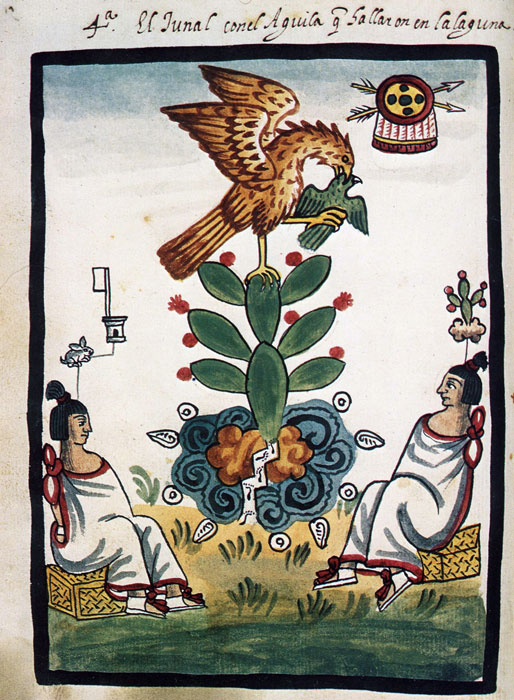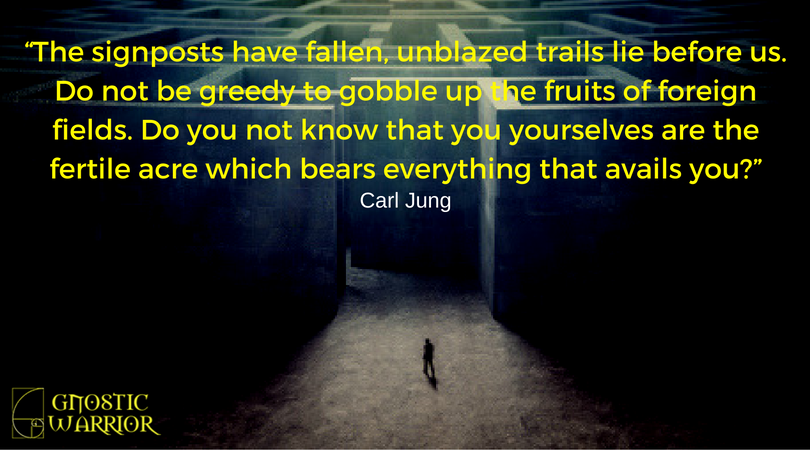“The whole earth has been corrupted through the works that were taught by Azazel: to him ascribe all sin.” — 1  Enoch 10:8
Enoch 10:8
The Aztecs were a group of various warrior tribes who dominated the lands where they had lived such as in Mexico up until around the 17th century. It is said that they had mysteriously arrived in South America in approximately the 13th century, and were led by a King named Tenoch who built the first city of the Aztecs named after him which became their capital and the center of power for the Tenoch Aztecs who had lived their for close to 400 years.
I have found various interesting connections between the Aztecs and a sea faring people known in Greek literature as the Phoenicians and in the Scriptures as the Sidonians. The most obvious being the name of the King and capital of the Aztecs being that of “Tenoch” which is very similar to the name we find in the bible as the great-grandfather of Noah known as Enoch. There is also the Book of Enoch which describes the fall of the Watchers, the angels who fathered the Nephilim (cf. the bene Elohim, Genesis 6:1–2) and narrates the travels of Enoch in the heavens.
The Aztecs were said to have migrated to South America starting around 1064. According to the Bible Cain, who was banished to a distant “Land of Wandering,” built a city and named it after his son Enoch; and Enoch had four descendants from whom there grew four clans. The Spanish chronicler Friar Bernardino de Sahagun (Historia de las cosas de la Nueva Espana), whose sources were verbal as well as Nahuatlan tales written down after the conquest, recorded the sea voyage and the name, Panotlan, of the landing site; the name simply meant “Place of arrival by sea,” and he concluded that it was in what is now Guatemala.
Their main first city called Tenoch or Tenochtitlan was was founded in approximately 1325 by their King Tenoch. It is said that the earliest migrants of these people were called Tenochites, or the People of Tenoch. This name ‘Tenoochites” can also be connected to the Phoenicians with their warrior priests known sometimes by the name of “Telchines” and at other times Corbynytes, Priest of Pan, Ophites and in scripture as the Kohanim Levites. I have written about these warrior priests and artisans from the Mediteraniean island of Crete and surrounding areas many times before here on the Gnostic Warrior.
This migration of the Aztecs of Tenoch we may be able to connect to the Phoenicians of Enoch using etymology, archeology, symbology and common sense. Today we are beginning to discover the ancient lost lost realms of the Enochian Sons of Cain who still suffer the sevenfold avenging of their forefather’s crime of fratricide.
These facts we can find in another interesting symbological connection to the main symbol of the Aztecs that some say is an eagle and I know to be a phoenix. It was the Aztec sun and war god, often represented in art as either a hummingbird or an eagle.
The phoenix being a Phoenician symbol as well.
There was also the symbol of the feathered serpent god of the Aztecs known as Quetzalcoatl as depicted in the Codex Borbonicus. Quetzalcóatl was the god of the morning and evening star. He was a flying reptile (much like a dragon), who was a boundary-maker (and transgressor) between earth and sky. He was a creator deity having contributed essentially to the creation of Mankind.
The Phoenicians of Crete had also created a global religion based on esoteric serpent worship that they imported to just about every nation on earth. There was the famous Cretan snake goddess and Phoenician Astarte. Philo had once said that the Phoenician alphabet “are those formed by means of serpents.” The flying dragon myths we find in the Celtic and Norse serpent myths. I have written about these serpent and dragon facts many times here on the Gnostic Warrior. Now we are just connecting them to the Aztecs.
The Aztecs came to Mexico during their migration from a place known as Aztlan which was said to be the ancestral homeland of the Aztecs, but this Azatlan is yet to be identified by archaeologists. However, I have found more connections between these tow people being that of the Aztec place known as Azatlan and the Phoenician location known as Mount Azazel [ə-ˈzā-zəl], also spelled Azazael (Hebrew: עֲזָאזֵל, Azazel; Arabic: عزازيل , Azāzīl).
This name can be found in the Bible in association with the scapegoat rite. Azazael is the name of a fallen angel in the religious traditions of Judaism, Christianity, and Islam. In Rabbinic Judaism it is not a name of an entity but rather means literally “for the complete removal”, ie, designating the goat to be cast out into the wilderness as opposed to the goat sacrificed “for YHWH“.(wikipedia)
In the Dead Sea Scrolls the name Azazel occurs in the line 6 of 4Q203, the Book of the Giants, which is a part of the Enochic literature found at Qumran. According to the Book of Enoch, which brings Azazel into connection with the Biblical story of the fall of the angels, located on Mount Hermon, a gathering-place of demons from of old (Enoch xiii.; compare Brandt, “Mandäische Theologie,” 1889, p. 38).
Azazel is represented in the Book of Enoch as one of the leaders of the rebellious Watchers in the time preceding the flood; he taught men the art of warfare, of making swords, knives, shields, and coats of mail, and women the art of deception by ornamenting the body, dyeing the hair, and painting the face and the eyebrows, and also revealed to the people the secrets of witchcraft and corrupted their manners, leading them into wickedness and impurity; until at last he was, at the Lord’s command, bound hand and foot by the archangel Raphael and chained to the rough and jagged rocks of [Ha] Duduael (= Beth Ḥadudo), where he is to abide in utter darkness until the great Day of Judgment, when he will be cast into the fire to be consumed forever (Enoch viii. 1, ix. 6, x. 4–6, liv. 5, lxxxviii. 1; see Geiger, “Jüd. Zeit.” 1864, pp. 196–204).
Like the Watcher in Enoch, the Aztecs had also ornamented their bodies, painted their faces, dyed their feet, and painted their hands and neck with intricate designs. Women’s makeup consisted of yellow ocher face paint with a little pattern and dyed their hair with indigo to make it glisten. Hairstyles, like the garments the Aztec wore, identified the class, age, and status of the wearer. Most Aztec women had long hair, which they would oil to make it shine.
The men painted their faces in bands of black, white, blue, red, or whatever color the occasion required. They also stained their teeth scarlet and practiced the art of tattooing. Early Aztec tattoos helped identify the rank of a warrior and the deeds. the Aztec (women and men) would tend to always decorate themselves with gold bangles, necklaces, chokers, etc
Just like the Aztecs, the Watchers or who we can call Phoenicians men and women also liked to keep their hair long. The women wore their hair often long and flowing or in intricately pinned to their head. Phoenician women wore many personal body ornaments and so did the men. This is spoken of the Hebrew women denounced by the prophet Isaiah when he had said, “tinkling ornaments of the feet, the cauls, the round tires like the moon, the chains, the bracelets, and the mufflers, the bonnets and the ornaments of the legs, and the head-bands, and the tablets, and the ear-rings, the rings and nose-jewels, the changeable suits of apparel, and the mantles, and the wimples, and the crisping pins, the glasses, and the fine linen, and the hoods, and the vails.”
The Phoenicians had an ancient elaborate religion and at one time practiced the rites of human sacrifice and fratenicide. The Aztec also had a very similar faith that shared many aspects with the Phoenicians, notably including the rite of human sacrifice. In the great cities of the Aztec empire, magnificent temples, palaces, plazas and statues embodied the civilization’s unfailing devotion to the many Aztec gods. The old Phoenician homeland of Crete which is said to be the birthplace of modern civilization was also once home to over 100 magnificent cities, palaces, temples and one of the Seven Wonders of the World with the world’s busiest sea ports.
The similarities and customs between the Aztecs, Phoenicians and Sons of Enoch are just too many to count as a coincidence. This could be a book in itself and much of this research I have listed here and can be found in a multitude of books if you care to look into this subject further.
If we are to use simple common sense and reason, we can safely say that they are one and the same people who were at “one time” the most powerful tribe on earth who later were conquered by competing tribes, or more appropriately “brotherhoods of merit.” Brotherhoods, warriors and priests organized by the Catholic Church and various powerful royal families whose main enemy at one time were who they had labeled the “Sons of Satan and the Sons of the Serpent.” These remaining serpent tribes of the Phoenicians and Greek Hellenes who later become known as the Jews.
The Serpent subdued in the symbol of Mexico. (image of : Statue of the founding of Tenochtitlan, Mexico City by Carlos Marquina)
For their transgressions, they were banished by the Church from their homelands in Crete, Rhodes, Greece and Egypt. The goat cast out into the wilderness and came to places such as America and what we know today as Mexico. Abraham says that the wicked will “putrefy in the belly of the crafty worm Azazel, and be burned by the fire of Azazel’s tongue” (Abr. 31:5), and earlier says to Azazel himself, “May you be the firebrand of the furnace of the earth! Go, Azazel, into the untrodden parts of the earth. For your heritage is over those who are with you” (Abr. 14:5–6).
Later the remaining serpent tribes like that of the Aztecs were sought out and conquered in North and South America. Their empires wiped out by war. Memories of a culture buried in time. Their stories and their descendants are all that remain.
A violent history and culture that still runs in their blood.(watch the video below)
Evidence we can still see in Mexico and America’s prison system which is simply the toughest and most violent in the world. The Latin prison system is one of the most violent in the world. The police some of the most corrupt. Their borders have been fenced and people somewhat segregated by necessity. The taming and somewhat humane control of a once powerful and violent race.
Such is the story of religion and war. A battle where the most clever not only know how to use a sword, but do so without anyone knowing who wields it. Bound in the fasces of the state under the Rule of Law.

Moe is the founder of GnosticWarrior.com. He is a father, husband, author, martial arts black belt, and an expert in Gnosticism, the occult, and esotericism.










